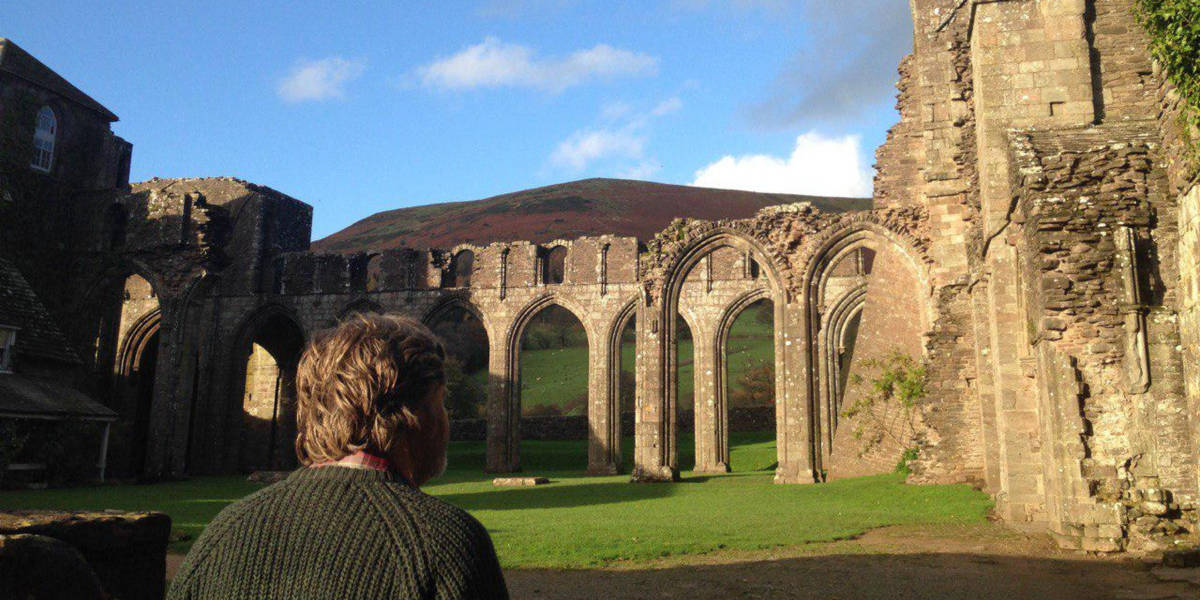The Life Saving Journey that Inspired Road XS
“This is what keeps me motivated, my team motivated and I hope this keeps governments and communities motivated, too.”
Oliver Kemp
Road XS Founder

A Visit to the Dentist
September 2013, Monmouthshire
Kim drove to the dentist, hoping for some much-needed relief. His wisdom tooth was impacted and growing into his jaw. It was causing unbearable pain.
After months of suffering, he was finally scheduled for surgery. Under general anaesthetic, the tooth was removed, leaving behind a deep wound.
But something wasn’t right.
Months passed, and the wound refused to heal. The pain lingered. Concerned, Kim returned to his dentist, who took a scan to investigate further. What followed would change his life forever.
Kim received a call and was quickly scheduled for a biopsy. The next two weeks were agonising—a waiting game filled with worry but also reassurances from family and friends that everything would be fine.
Then, the results came in.
Kim had an aggressive, slow-growing cancer— an adenoid cystic carcinoma—lodged deep within his sinuses (pterygoids). It was one of the rarest, most difficult cancers to treat.
The doctors were blunt: he had, at best, one year to live.
Even the medical team struggled to agree on a way forward. The location of the tumour made surgery incredibly risky, and they had seen very few cases like his. Time was running out.
After a tense week of deliberations, a team of specialists devised a plan. It would require immense skill, precision, and luck.
But it was his only chance.
14 Hours of Surgery
December 7th, 2014
Kim was taken into surgery for what would be a gruelling 14-hour operation. The longer it lasted, the better the chance of removing most of the cancer—but the risks were enormous. His family could do nothing but wait and hope.
The operation was a success. Kim had made it through and remained on the ward to recover.
During his hospital stay, he became known on the ward as Superman—a title he more than earned. Just ten days later, he was discharged, just in time for Christmas.
But his fight wasn’t over.
In February 2015, the next phase of treatment began:
Six weeks of radiotherapy, five days a week, directly targeting the cancer in his sinuses.
It was brutal.
The treatment drained him, leaving him feeling worse than ever. But every day, Kim got back on the hospital community transport bus and continued his fight.
It Came as Such a Shock
Your Worst Nightmare

We always assume these things happen to someone else. That cancer is something distant—something we might have to face later in life.
But the reality is stark. Between 2014 and 2016, an average of 363,484 new cases of cancer were diagnosed annually in the UK (Cancer Research UK). Despite the statistics, nothing prepares you for it.
Kim Kemp is my Dad.
I’ll never forget the day he called me.
“Are you sitting down?” he asked.
Then he told me the worst news imaginable: that he had this deadliest form of cancer, and the doctors didn’t know what to do next. It felt like a nightmare—except I was wide awake.
The Role of Community Transport
A Lifeline For So Many
It was during my dad’s radiotherapy treatments that I first learned about community transport.
Before then, I hadn’t even known it existed. But as I watched my Dad rely on it daily, I realised how vital it was.
Community transport isn’t just about getting people from A to B—it’s about getting people where they need to be, sometimes at the most frightening and uncertain times of their lives.
And yet, these services are often overlooked and underfunded.
I spoke to the volunteer driver who took my dad to his appointments. He told me their entire service was run by volunteers, operating on limited funding. Some passengers had no other way of getting to their medical appointments.
All their resources—funding, donations—went toward keeping the vehicles on the road: fuel, maintenance, repairs. And yet, he wasn’t even sure if their service would still exist in a few months, as funding cuts loomed.
That troubled me deeply.
Community transport is a lifeline for so many people like my dad. Without it, they wouldn’t get the treatment they need.
And in my dad’s case—without community transport, he wouldn’t be here today.
Why Road XS Started
Something Had to Change
My Dad’s story made me realise that something had to change.
I wanted to help make community transport services sustainable—to ensure they could keep running efficiently, saving fuel and operating costs while meeting rising demand.
That’s why I built Road XS.
Today, Road XS supports community transport providers across the UK and has evolved to power modern, demand-responsive public transport services.
Since launching, we’ve heard countless stories like my dad’s—people who depend on these services to get to their cancer treatments, medical appointments, or even social events.
We’ve helped reduce loneliness and social isolation and made sure people get where they need to be safely.
We even developed the first passenger optimisation software, helping transport services get more from their existing resources—saving money while improving accessibility.
This is what keeps me motivated. This is what keeps my team motivated. I hope this keeps governments and communities motivated, too.
Because the truth is—you never know when you might need community transport. Life is unpredictable. One day, it might be your loved one who needs that journey.
For my dad, community transport added 11 more years to his life.
He turned 70 in February 2024—and he still uses community transport when he needs to even in 2025 for follow up radiotherapy treatments.
Road XS is my way of saying thank you—to the NHS, the volunteers, the drivers, and the charities that work tirelessly to provide these services.
Working together, we can make a real difference in people’s lives—every single day.
Oliver Kemp – Road XS Founder
*The photo is a picture I took of my Dad at Abergavenny Castle when my brother and I went to stay with him a week before his operation.
User-Friendly Transport Software
Road XS stands out as the most user-friendly transport software, offering a scalable platform that sets it apart from competitors. Its intuitive design and flexibility make it the ideal choice for any serious transport operator.
Demand Responsive Transport Services

Community Transport Services

Non-Emergency Patient Transport Services

